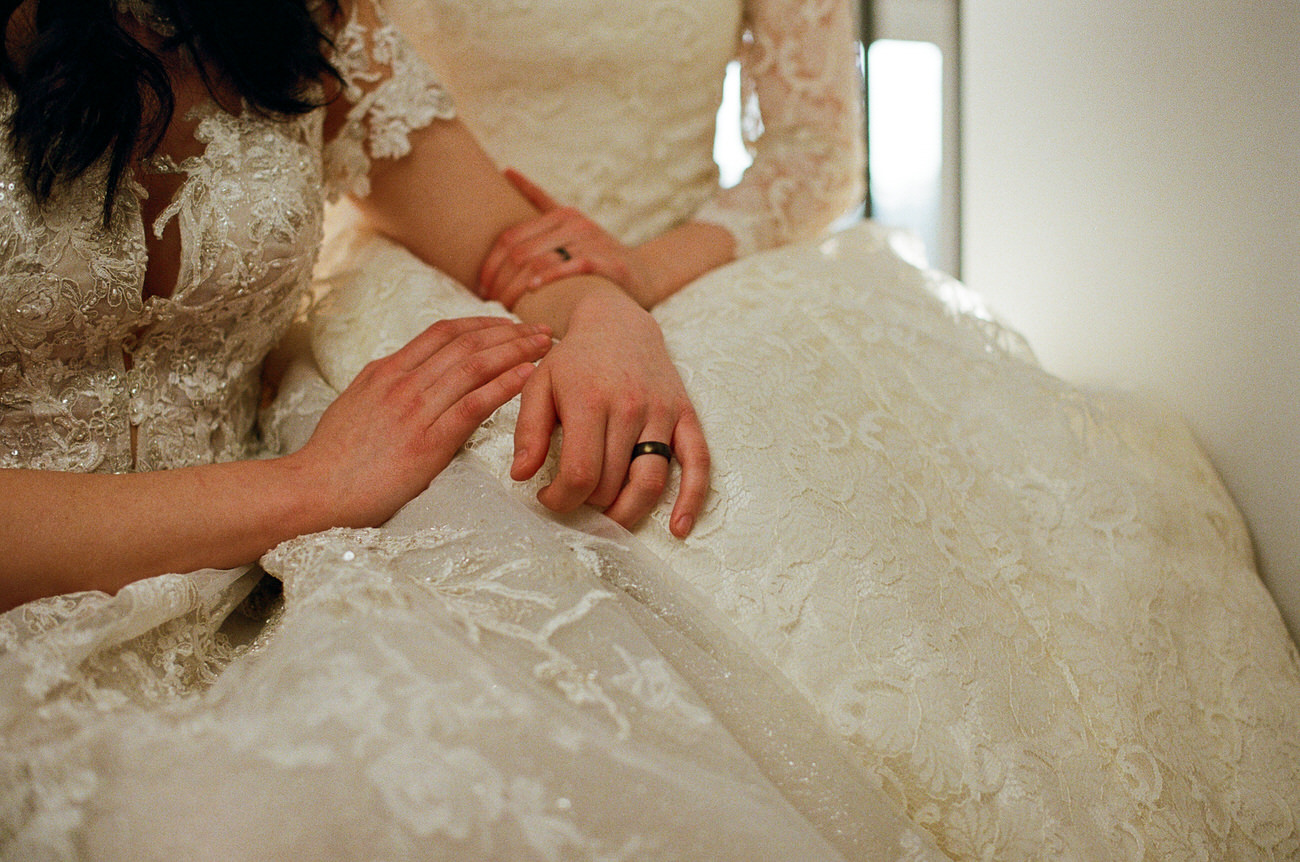There are so many different types and styles of photography that you can choose for your wedding day. Each one carries its own benefits, quirks, and aesthetics that may be perfect for your wedding or not so much. One that is starting to gain popularity again is film wedding photography.
As a wedding photographer myself, I have captured a ton of weddings all over the place and each one has had their unique vibe to them. The one thing that is always important to remember is that your wedding photos are for you and you only.
So, this means picking a style and an aesthetic that you connect with and want to look back on for years to come. If you are ready to dive into the world of photography to decide what is best for your big day, I am here to help!
Let’s take a look at film wedding photography and all that it has to offer!
What is film photography?
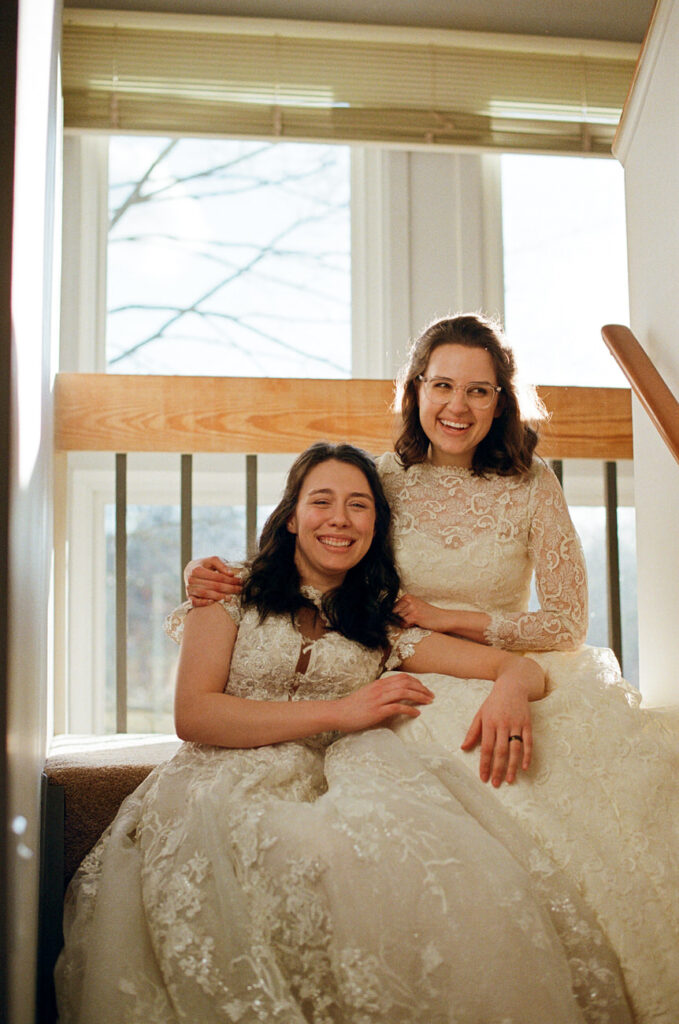

First, let’s start off by talking about what film photography is. As you are probably guessing, film photography is the old school way of capturing photos. These photos take time to develop and while having their own charm, may not necessarily fit everyone’s idea of their perfect wedding photo.
Film photography, however, does give your photos a sense of nostalgia to them. You may even be picturing the classic film photos with the almost grainy texture over them. While they may not be as crisp as digital photos, they definitely have their own character that is unmatched!
Film photography vs digital photography
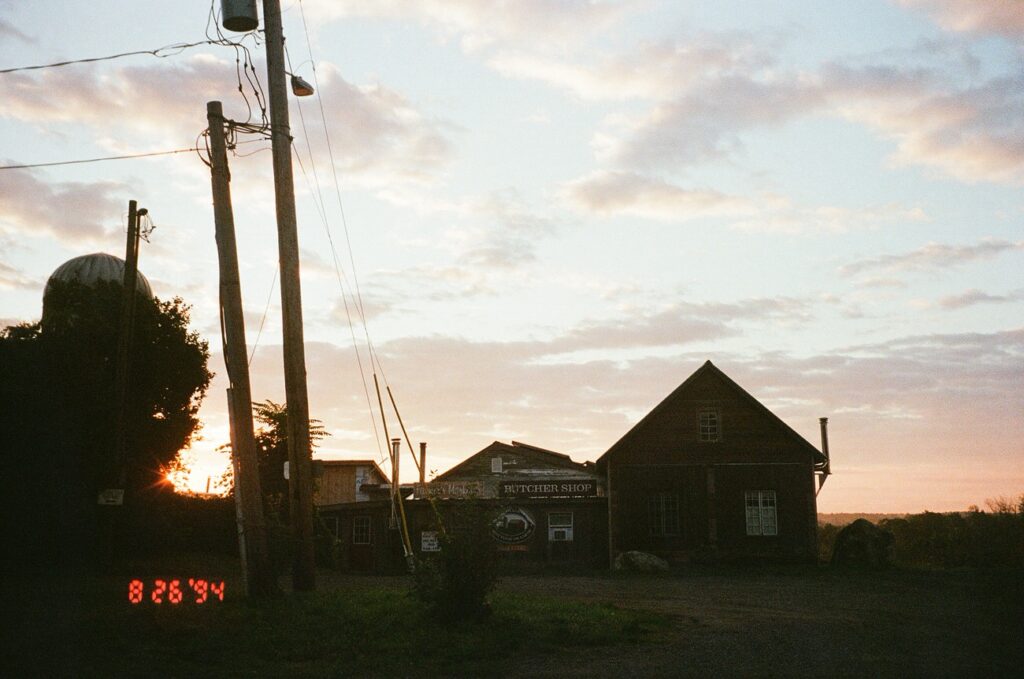
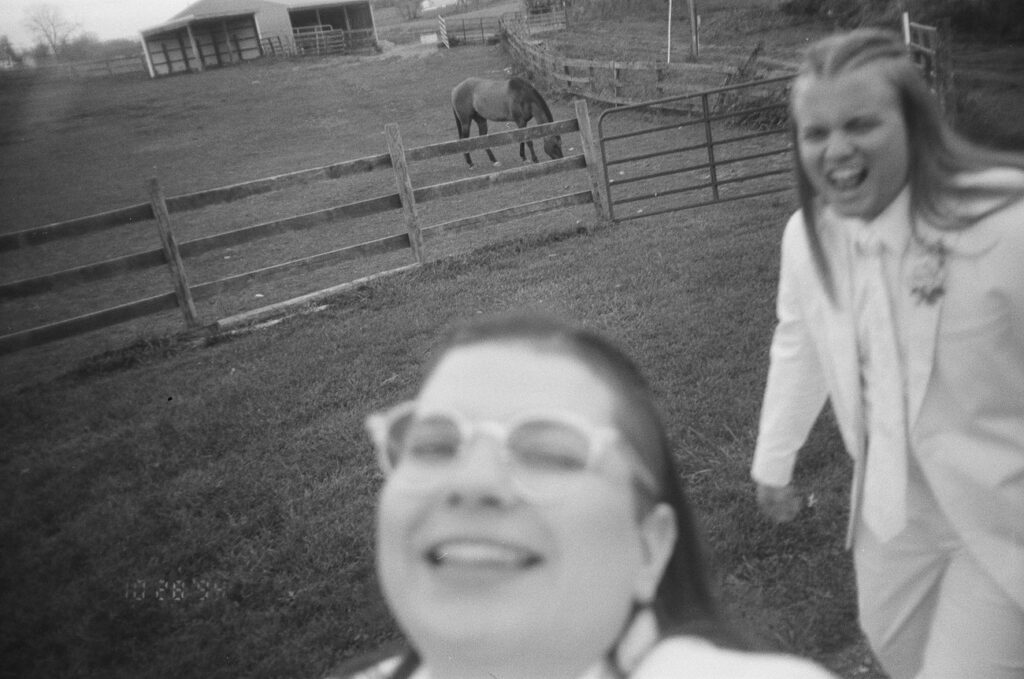
Speaking of digital photography, what is the difference between that and film photography? Well, without getting too technical, the main difference between the two types of photos is how the photos are actually developed.
Whether you are capturing an image on a digital camera or a film one, the basic mechanics of taking the photo is the same (point and click), but what happens after is where the two differ.
Digital photos are able to be seen instantly. We have all probably used a digital camera so we know once we take the photo, we can click a single button on the camera and see the image it just captured.
With a film camera, however, you don’t get that instant image. Although there are different types of film cameras (which we will talk about in a minute), none of them will instantly give you the image like a digital camera will.
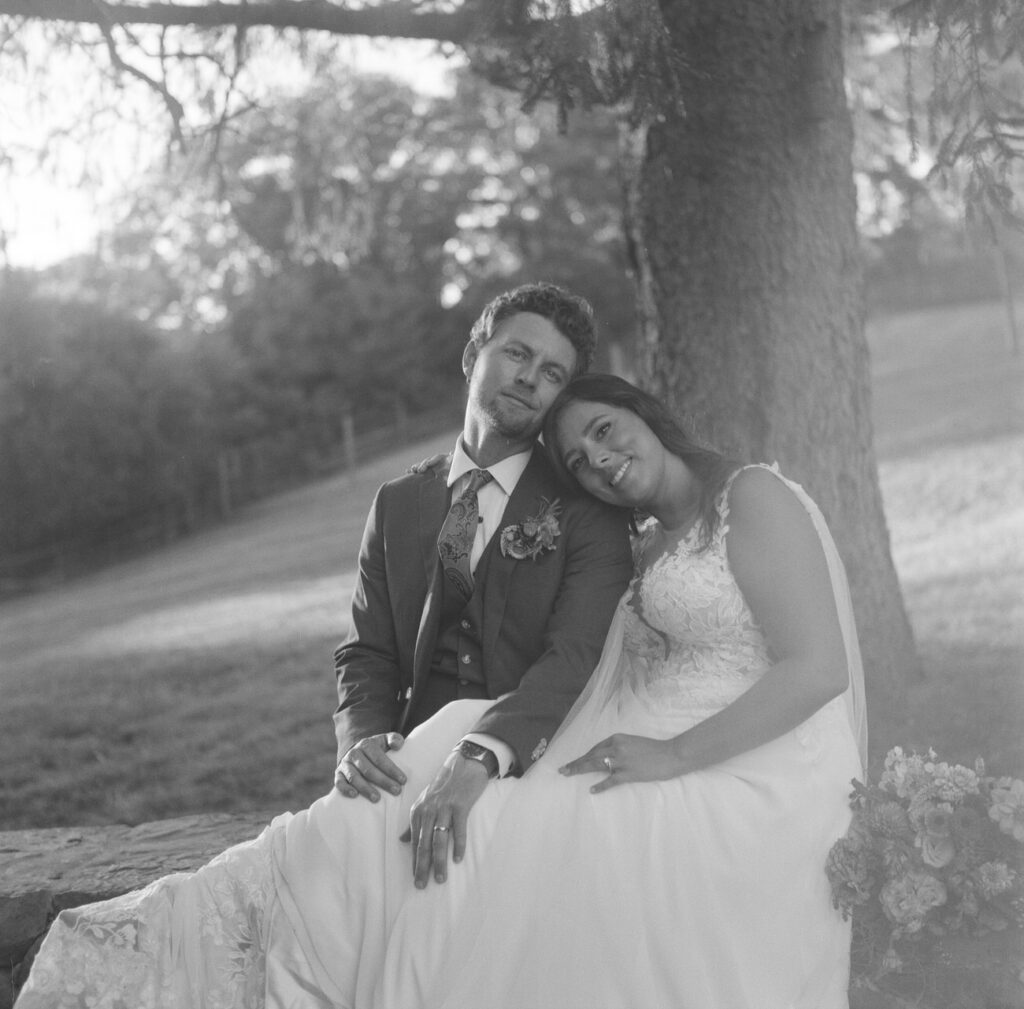

Instead, you have to wait for the image to develop before the image captured is fully revealed. This is also something that can happen gradually over a couple of minutes (as with instant film) or take some work to actually develop (as with 35mm film).
This means that when you are photographing with film cameras, you don’t necessarily know what the outcome of the photo will be until much later.
When it comes to your wedding, you’ll often find that photographers will use both digital and film cameras. This gives you the flexibility to have those genuine film moments while also ensuring that the most important moments of your wedding are captured just as you would like!
Different types of film photography
I mentioned that there were a few different types of film photography. The two most common that you will likely come across when it comes to wedding photography are 35mm film photography and instant film photography.
So, let’s break both of these down so you know exactly what you are getting with each!
35mm film photography
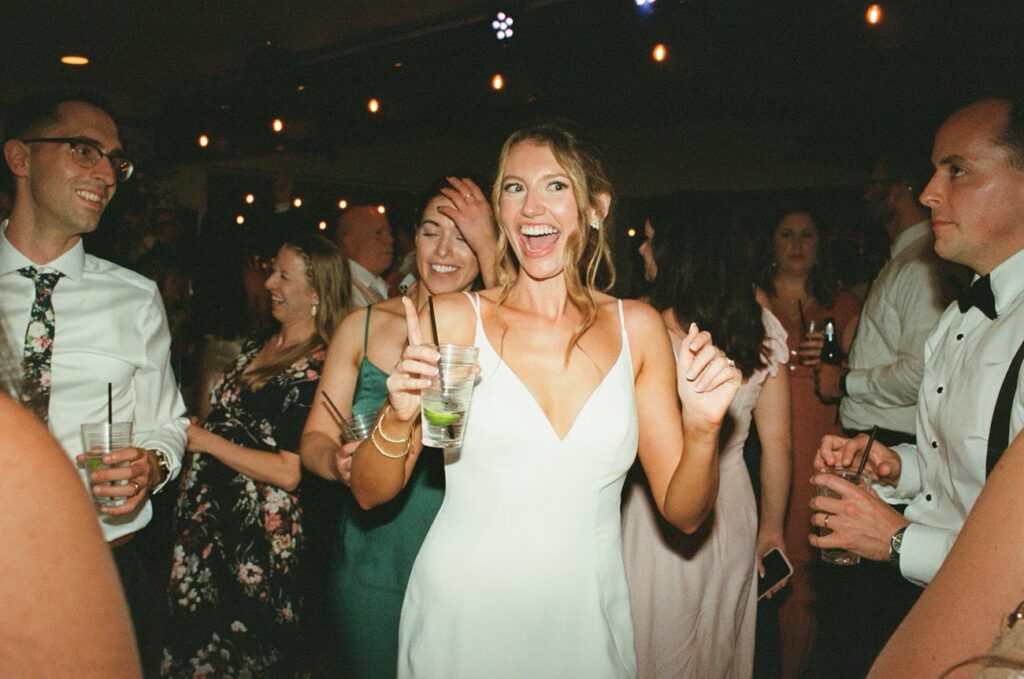
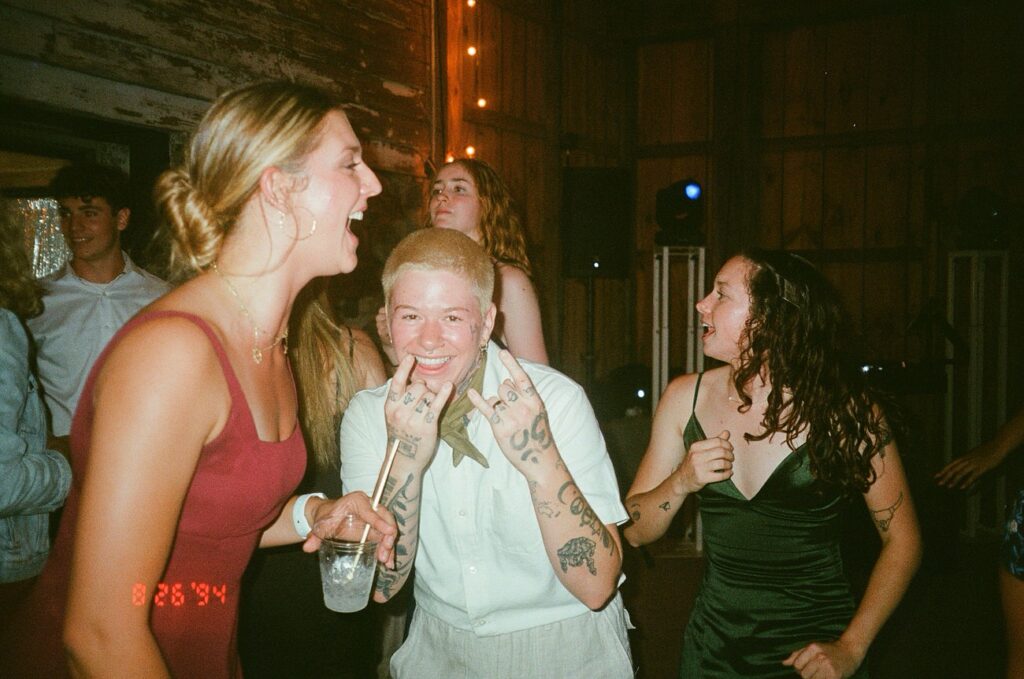
35mm film photos are the classic type of film photography that probably came to your mind when you heard the word “film.” These are the cameras that capture your images on the small rolls of film that then have to be developed after the fact.
These photos can have an amazing character to them, but it is a somewhat tedious process to actually develop them. Each roll has to be developed by hand through a very careful process to ensure that no outside light affects the film.
Because of how these photos are developed, there is no way of knowing what the actual image looks like or how well it came out until the photo is actually developed. While this is one of the joys of film photography (the unknown) it can also be a con for some people.
One misconception about film photography, though, is that you cannot edit the images after the fact. Just like any other digital photo, you are able to upload your film images to a computer and edit them!
Instant film photography
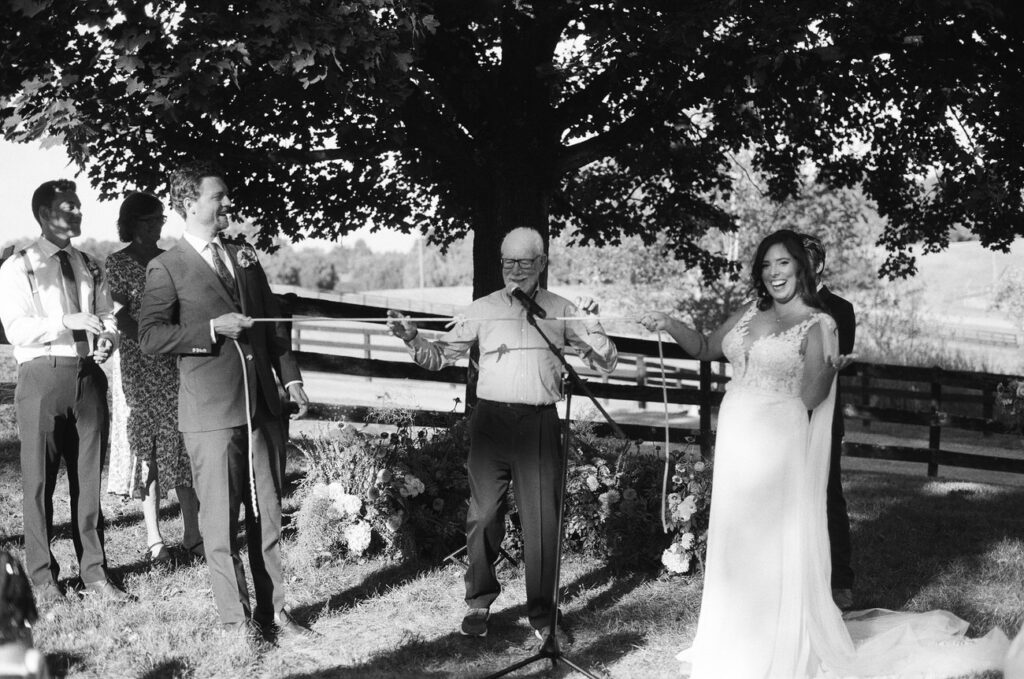
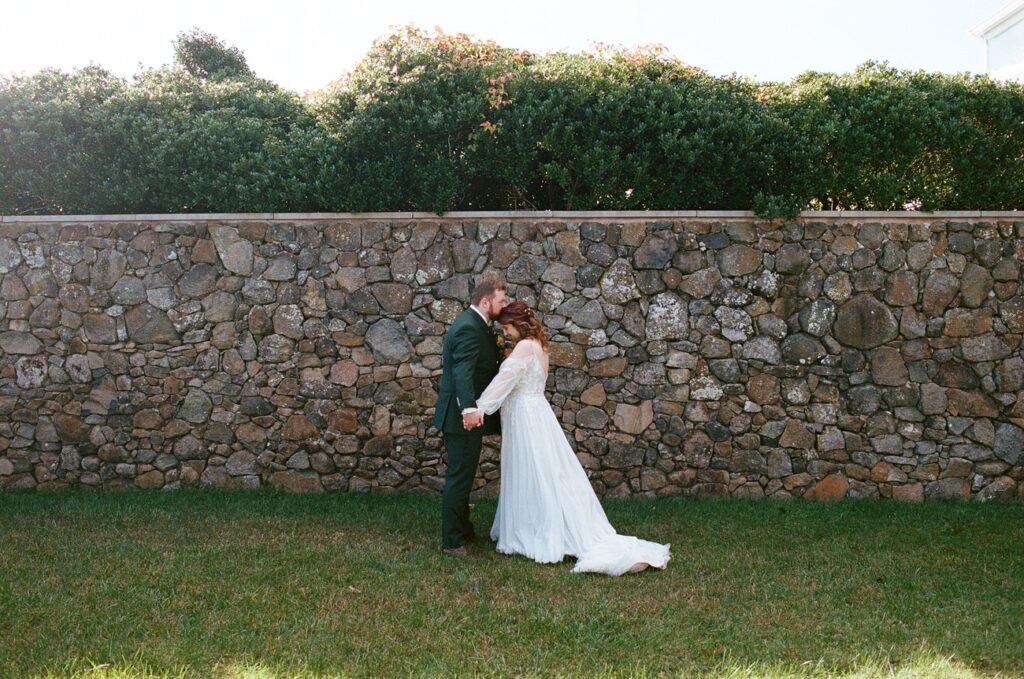
Instant film photos are the other photos you see mentioned when it comes to film wedding photography. When you think of these, you can think of things like Polaroid cameras that print out the individual prints.
Now, while the name says instant, that is actually a bit deceiving. It does actually take time for these images to develop and different types of instant cameras develop at different rates.
For example, that Polaroid image can take up to 15 minutes to actually develop once the image is taken. Another popular instant film camera though, Instax, only takes about a minute and a half to two minutes to develop the image.
Whether it is two minutes or 15, this type of film photography definitely takes much less time to develop than 35mm film. If you do want that film aesthetic to some of your photos but want to be able to see the image (and retake it if you need to) while you are still in the moment, instant film may be a great addition to your wedding photography.
Why get film photography at your wedding?
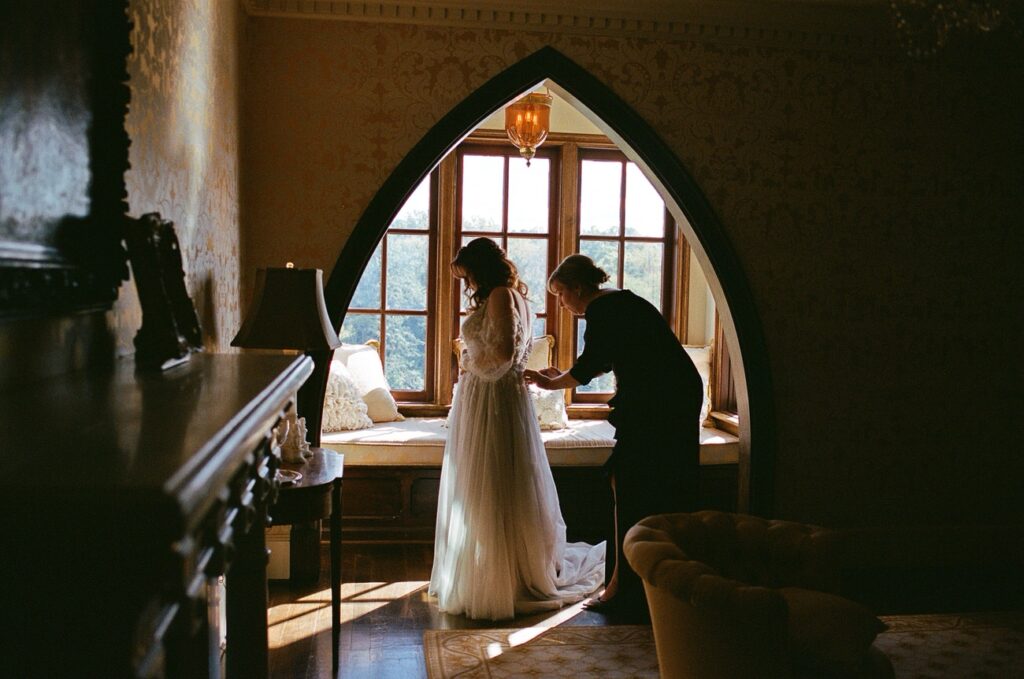
Now that we have talked about what film wedding photography is and the different types you can get, let’s talk about why you would even want to get it in the first place. I mean, we have digital cameras now and that is what most people use to capture weddings so why do we need film?
Well, while digital cameras are amazing and are definitely not going anywhere in the wedding space, film cameras just add an extra layer to your wedding album. When you look at a film photo, there is this instant sense of nostalgia that you feel that you just don’t get with a digital photo.
Film photography also has a very specific aesthetic that is associated with it and while you can (through editing) theoretically achieve that same aesthetic with a digital camera, there is just something special about a photo taken on film.
Finally, film photography is a labor of love. Like I mentioned earlier, it takes time and effort to develop each individual roll of film taken on a camera. It is a careful process that takes a very intentional touch to ensure it is done right.
With something like your wedding photos, this can be the thing (that magic sauce) that helps take that photo to the next level. There is something special about a photo that is hand developed and you can really see the time and effort that is put into each image you get.
Final Thoughts on Film Wedding Photography
There you have it, a breakdown of film wedding photography and why it may be right for your wedding. At the end of the day, there is no right or wrong answer when you are trying to figure out whether to add this to your wedding or not.
It really is personal taste and what you are looking for with your specific photos. However, it does add a special touch to your gallery and creates a feeling of nostalgia.
If you are planning your wedding and still looking for that perfect photographer to capture your magical day, I’d love to chat with you. I include film in the cost of every wedding package, so you can have these nostalgic images without any add-ons! You can click here to learn more about my wedding photography services or you can head over here to get in touch with me and talk about your wedding plans!
